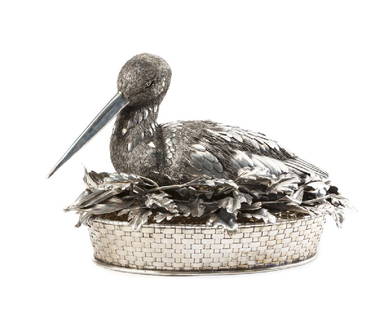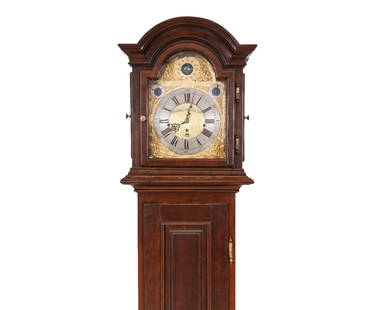
John Ericsson, Inventor of the USS Monitor, Discusses
Similar Sale History
View More Items in Decorative BasketsMore Items in Decorative Baskets
View MoreRecommended Decorative Objects
View More



Item Details
Description
Ericsson John
John Ericsson, Inventor of the USS Monitor, Discusses Production Problems of His Caloric Engine
JOHN ERICSSON, Autograph Note Intialed, to [John B. Kitching], 1859. 1 p., 7.75" x 9.75". Expected folds, some residual glue on right side of verso.
Complete Transcript
Orr versus Clutes 1859
Our friend Orr, than whom none can handle his file better nor his English worse, intends to be very explanatory; but I fear his statement will hardly carry conviction home to the bosoms of your able engine manufacturers, the Clutes, that 28 days were legitimately spent in correcting blunders and imperfections in Steward’s engine.
What I suggested to you was to extract from Orr a statement in detail of the imperfections, blunders and omissions of which the manufacturers had been guilty, in producing the engine under consideration.
J. E
Historical Background
John Ericsson became intrigued with the idea of a caloric engine at a young age. The caloric engine worked on the basic principle of power by hot air, with no need for steam. Expanding warm air drove the piston, fly wheel, and shaft. Ericsson began designing caloric engines in the 1820s and continued to modify the designs until his death. His primary investor in the United States was New York merchant John B. Kitching, who became the principal owner of the ocean-going caloric ship Ericsson, constructed in 1852 at a cost of $500,000. Although the initial reaction of the press and engineers was positive and the ship was a mechanical triumph, it proved to be a commercial failure. His smaller caloric engines, however, achieved a moderate degree of success and brought him considerable financial rewards.
Cadwallader C. Clute founded what became the Clute Brothers Foundry and Machine Shop in the 1840s in Schenectady, New York. His brothers John B. Clute and Jethrow W. Clute later joined him in the business, which built bridges over the Erie Canal. The Clute Brothers also constructed the two steam engines that rotated the turret of the USS Monitor, an innovation that changed the course of naval warfare.
In August 1861, Congress recommended the construction of armored ships for the navy. Ericsson submitted a novel design for an armored ship with a rotating turret based on Swedish lumber rafts. The USS Monitor was constructed in approximately one hundred days, an incredible achievement, and launched on March 6, 1862. Three days later, the USS Monitor confronted the CSS Virginia (the former USS Merrimack) at Hampton Roads, Virginia, in the first battle between ironclad warships. Although the battle ended as a tactical stalemate, the Monitor effectively checked the Virginia’s assault on the Union fleet. Dozens of additional monitors contributed to the success of the Union Navy for the remainder of the war.
John Ericsson (1803-1889) was born in Sweden and began working independently as a surveyor at the age of fourteen. He joined the Swedish army in 1820 and completed surveys in northern Sweden. In his spare time, he constructed a heat engine that used hot air instead of steam as a propellant. He moved to England in 1826, but his engine that worked well with Swedish wood as fuel fared poorly with English coal. By 1836, Ericsson had patented a design for a screw propeller. After designing an improved twin-propeller steamer, Ericsson moved to New York in 1839, and became a naturalized citizen in 1848. He built a screw-propelled warship for the U.S. Navy, but one of the guns on the USS Princeton exploding during trials in 1844, killing several dignitaries, including the Secretary of State and the Secretary of the Navy. The Navy sought to blame Ericsson, and he turned to civilian pursuits. Ericsson continued to develop his caloric engine, for which he won the Rumford Prize of the American Academy of Arts and Sciences in 1862. In 1854, Ericsson presented French Emperor Napoleon III a plan for an iron-clad armored battle ship, but France did not build it. Ericsson submitted a novel design for an armored warship to the U.S. Navy in 1861, and the USS Monitor was built in time to confront the first Confederate ironclad. He continued to work on naval inventions, including a torpedo, a destroyer, and a torpedo boat, until his death.
John B. Kitching (1813-1887) was born in England and immigrated to the United States with his parents in 1824. He married Maria Bradner, and they had six children. One of his sons, John Howard Kitching, became a brigadier general in the Union Army and died from wounds received at the Battle of Cedar Creek in October 1864. John B. Kitching became a prominent New York merchant. He supported Samuel Morse in his telegraphic inventions and helped finance the first transatlantic cable. He also supported John Ericsson’s development of caloric engines. In 1860, Kitching authored Ericsson’s Caloric Engine, an illustrated 48-page pamphlet promoting the caloric engine and including many testimonials to its quality and utility.
WE PROVIDE IN-HOUSE SHIPPING WORLDWIDE.
John Ericsson, Inventor of the USS Monitor, Discusses Production Problems of His Caloric Engine
JOHN ERICSSON, Autograph Note Intialed, to [John B. Kitching], 1859. 1 p., 7.75" x 9.75". Expected folds, some residual glue on right side of verso.
Complete Transcript
Orr versus Clutes 1859
Our friend Orr, than whom none can handle his file better nor his English worse, intends to be very explanatory; but I fear his statement will hardly carry conviction home to the bosoms of your able engine manufacturers, the Clutes, that 28 days were legitimately spent in correcting blunders and imperfections in Steward’s engine.
What I suggested to you was to extract from Orr a statement in detail of the imperfections, blunders and omissions of which the manufacturers had been guilty, in producing the engine under consideration.
J. E
Historical Background
John Ericsson became intrigued with the idea of a caloric engine at a young age. The caloric engine worked on the basic principle of power by hot air, with no need for steam. Expanding warm air drove the piston, fly wheel, and shaft. Ericsson began designing caloric engines in the 1820s and continued to modify the designs until his death. His primary investor in the United States was New York merchant John B. Kitching, who became the principal owner of the ocean-going caloric ship Ericsson, constructed in 1852 at a cost of $500,000. Although the initial reaction of the press and engineers was positive and the ship was a mechanical triumph, it proved to be a commercial failure. His smaller caloric engines, however, achieved a moderate degree of success and brought him considerable financial rewards.
Cadwallader C. Clute founded what became the Clute Brothers Foundry and Machine Shop in the 1840s in Schenectady, New York. His brothers John B. Clute and Jethrow W. Clute later joined him in the business, which built bridges over the Erie Canal. The Clute Brothers also constructed the two steam engines that rotated the turret of the USS Monitor, an innovation that changed the course of naval warfare.
In August 1861, Congress recommended the construction of armored ships for the navy. Ericsson submitted a novel design for an armored ship with a rotating turret based on Swedish lumber rafts. The USS Monitor was constructed in approximately one hundred days, an incredible achievement, and launched on March 6, 1862. Three days later, the USS Monitor confronted the CSS Virginia (the former USS Merrimack) at Hampton Roads, Virginia, in the first battle between ironclad warships. Although the battle ended as a tactical stalemate, the Monitor effectively checked the Virginia’s assault on the Union fleet. Dozens of additional monitors contributed to the success of the Union Navy for the remainder of the war.
John Ericsson (1803-1889) was born in Sweden and began working independently as a surveyor at the age of fourteen. He joined the Swedish army in 1820 and completed surveys in northern Sweden. In his spare time, he constructed a heat engine that used hot air instead of steam as a propellant. He moved to England in 1826, but his engine that worked well with Swedish wood as fuel fared poorly with English coal. By 1836, Ericsson had patented a design for a screw propeller. After designing an improved twin-propeller steamer, Ericsson moved to New York in 1839, and became a naturalized citizen in 1848. He built a screw-propelled warship for the U.S. Navy, but one of the guns on the USS Princeton exploding during trials in 1844, killing several dignitaries, including the Secretary of State and the Secretary of the Navy. The Navy sought to blame Ericsson, and he turned to civilian pursuits. Ericsson continued to develop his caloric engine, for which he won the Rumford Prize of the American Academy of Arts and Sciences in 1862. In 1854, Ericsson presented French Emperor Napoleon III a plan for an iron-clad armored battle ship, but France did not build it. Ericsson submitted a novel design for an armored warship to the U.S. Navy in 1861, and the USS Monitor was built in time to confront the first Confederate ironclad. He continued to work on naval inventions, including a torpedo, a destroyer, and a torpedo boat, until his death.
John B. Kitching (1813-1887) was born in England and immigrated to the United States with his parents in 1824. He married Maria Bradner, and they had six children. One of his sons, John Howard Kitching, became a brigadier general in the Union Army and died from wounds received at the Battle of Cedar Creek in October 1864. John B. Kitching became a prominent New York merchant. He supported Samuel Morse in his telegraphic inventions and helped finance the first transatlantic cable. He also supported John Ericsson’s development of caloric engines. In 1860, Kitching authored Ericsson’s Caloric Engine, an illustrated 48-page pamphlet promoting the caloric engine and including many testimonials to its quality and utility.
WE PROVIDE IN-HOUSE SHIPPING WORLDWIDE.
Buyer's Premium
- 25%
John Ericsson, Inventor of the USS Monitor, Discusses
Estimate $300 - $400
3 bidders are watching this item.
Shipping & Pickup Options
Item located in Westport, CT, usSee Policy for Shipping
Payment

Related Searches
TOP





































































